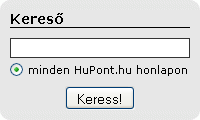Erdélyi Szövetség
"Széles körben ismertetnünk kell a félrevezetett világgal a valóságos magyar múltat, s az igazság feltárása által vissza kell szerezzük szétszakított népünk önrendelkezési jogát" (Wass A)
I
Protest against the Violent Occupation of and Vandalism in the Military Cemetery at Úzvölgy
Position of the Transylvanian Federation
In the course of the 100 years that have passed since 1920, Hungarians, the indigenous population of Transylvania, have suffered a continuous series of atrocities at the hands of the Romanian authorities, such as removal from their homes, ethnic cleansing and genocide in times of war, expropriation of Hungarian schools with and following the establishment of Romanian administration, together with limitations and then ban imposed on the use of the Hungarian language in public services, expropriation of Hungarian-owned lands, homes and other properties, persecution of the Hungarian Churches and their clergy, settlement of Romanians in the border zones, establishment of a so-called ‘cultural zone’ in, the Székelys’ land in Transylvania, ‘re-Romanisation’ of Székelys, the imposition of higher taxes and discriminative financial policies on Hungarian-owned enterprises. Entry of Hungarian students into higher educational institutes has been prevented by numerus clausus, and their teachers and intellectual leaders have been forced to emigrate to Hungary by constant persecution. Hungarian place-names and personal names have been eradicated. After 1945, a new period of restrictions of the Hungarian-language educational network began. In our day, rampant discrimination is evident in the merge of the Hungarian Medical and Pharmaceutical Faculty of Marosvásárhely with the Romanian university, the nationalisation of SzékelyMikóCollege, increased restriction and impediment of economic growth in Transylvania and within it, the Székely-populated counties. Hungarian administrative leaders, mayors and deputy mayors, are being intimidated and penalized by means of legal actions, while Romanian prefects, allegedly ‘exercising legal supervision’, serve as the extended arm of the central power.
And now things have gone as far as not only Hungarian institutions, lands and properties are being confiscated, not only Hungarian towns are being ruined in order to Romanise their townscape by building huge edifices and Orthodox churches, but even Hungarian cemeteries have been singled out for misappropriation.
After the change of regime, Hungarian graves and tombs in Kolozsvár’s Házsongárd Cemetery, the resting place of outstanding Transylvanian Hungarian scientists, scholars and artists, have disappeared one after the other, and Romanians have been buried in their place. More recently, the Hungarian military cemetery at Úzvölgy has been targeted. Similarly to the Marosvásárhely pogrom in 1990, on 6 June, a furious Romanian mob, instigated by certain people, charged at the Székelys standing guard at the cemetery, vandalising its gate, fences and the Hungarian crosses on the graves.
In the course of the fights at Úzvölgy in the First World War, until early 1918, more than 1.000 Austrian and Hungarian solders were buried in this cemetery. Separate memorials were erected to those officers showing outstanding courage. In 1944, Soviet motorized units defeated the Székelys’ defence forces here within hours, and many Székely soldiers were buried in unmarked graves. Second World War memorials in the Úzvölgy military cemetery were erected after 1990 at the initiation, among others, of surviving Székely veterans. From 1994 onwards, the cemetery has become the venue of official commemorations again, and renewal has been continuous. Up to now, 670 crosses have been restored and several memorials have been erected by the local government of Csíkszentmárton and other organisations with Hungarian state support.
During the past 100 years, countless Hungarian military cemeteries have been destroyed or left to perish (one example is the Dancurás Austro-Hungarian cemetery near GyilkosLake, which was devastated with excavators by Ceausescu’s authorities in 1987). Today, the cemetery at Úzvölgy is the only, largely reconstructed, monumental First World War cemetery in Transylvania to have qualified to compensate for the absence of others.
The Romanian Ministry of Internal Affairs claims it cannot do anything, it is ’examining the situation’. Concurrently, two Hungarian youths, István Beke and Zoltán Szőcs, both innocent, have been meted out a heavy, five-year imprisonment in a conception trial!
It has to be pointed out that for 100 years, all attempts at reconciliation on the part of the HungarianState have been rudely declined and eluded by the Romanian policy-makers, jurisdiction and police force. For the largest minority in Europe, the Hungarians of Transylvania, there is no way out other than territorial autonomy, with their own regional legislation, regional government, a police force under its control, and the use of local tax revenues, supplemented from the central budget, which may enable them to make decisions on their daily life. This is, in fact, the NUT2 model, under which several minority ethnic groups have been granted territorial autonomy, thus establishing their own independent regions within the European Union. For Transylvania, Bánát and Partium now in Romania, autonomy must be won, for this is the only way to ensure reintegration of these regions, which differ from the Romanian-populated Regat both economically and culturally, into Europe.
The suffering endured for 100 years must be ended!
Budapest, 7 June 2019
Transylvanian Federation
Mai: 3
Tegnapi: 57
Heti: 162
Havi: 1 664
Össz.: 279 595
Erdélyi Szövetség - © 2008 - 2026 - erdelyi-szovetseg.hupont.hu
